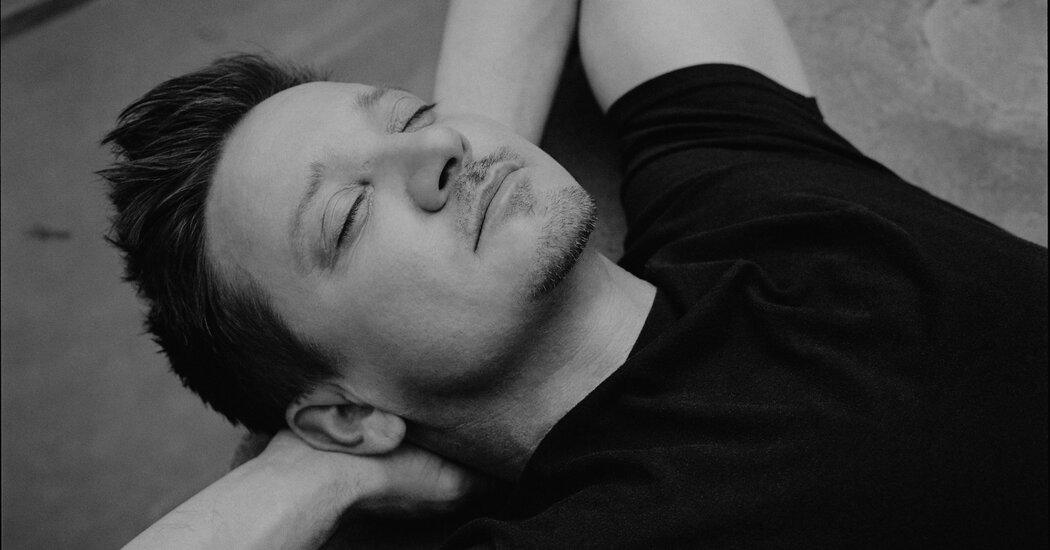A little over two years ago, the actor Jeremy Renner was run over by a seven-ton snowplow. In a new memoir, he wrote that as he lay near death, he experienced something extraordinary.
He could see his entire life at once, and felt an “exhilarating peace” and a connection to the world. He also saw family and friends arrayed before him, telling him not to let go.
“What I felt was energy, a constantly connected, beautiful and fantastic energy,” Mr. Renner wrote. “There was no time, place or space, and nothing to see, except a kind of electric, two-way vision made from strands of that inconceivable energy, like the whipping lines of cars’ taillights photographed by a time-lapse camera.”
What Mr. Renner described is “classic for near-death experiences,” the term researchers use for such events, said Dr. Jeffrey Long, the founder of the Near-Death Experience Research Foundation.
Dr. Long’s foundation has collected more than 4,000 accounts similar to Mr. Renner’s. Some people who have come close to death have recounted a sense of energy, peace and absence of time, as Mr. Renner did. Some have also described watching their body from above, moving through a tunnel toward a light and even meeting God.
The general public may be familiar with these events through a genre of memoirs that present near-death experiences as proof of a Christian afterlife. But they have been reported across countries, demographics and religions, as well as by atheists, and have been a subject of scientific research for decades.
There is no scientific consensus on what causes near-death experiences. But whatever their cause, they can change people’s lives. Some lose all fear of death; others change careers or leave relationships. The reactions to near-death experiences seem to outstrip what researchers have seen in people who nearly die but don’t have such an experience.
For those people, “usually it’s like, yeah, you almost died, so you become more appreciative of life,” said Marieta Pehlivanova, a research assistant professor of psychiatry and neurobehavioral sciences at the University of Virginia School of Medicine’s Division of Perceptual Studies, which researches near-death experiences.
But, Dr. Pehlivanova said, “the changes we see in these people who almost died but didn’t have an N.D.E. are much more subtle and do not continue over such a long period of time.”
Why do these experiences happen?
Near-death experiences are hard to study because the catastrophic injuries and illnesses that can lead to them don’t lend themselves to controlled experiments. But neuroscientists have proposed a range of theories as to what causes them, and many believe the experiences stem from a complex cascade of neurological and physiological processes.
In a paper published in March, seven researchers proposed an explanation that linked near-death experiences to a burst of brain chemicals called neurotransmitters, and an activation of specific receptors in the brain that produces a sense of calm and vivid imagery. The paper also posits that near-death experiences might occur when partly conscious people go through aspects of rapid-eye-movement sleep, which is when the most robust and complex dreaming happens.
Other scientists’ theories include one that involves the same neural receptors that facilitate the effects of ketamine.
Another suggests aspects of N.D.E.s might arise from dysfunction in the area of the brain responsible for combining sights, sounds, motion and our innate sense of where we are into a single sensory experience.
That might explain one of the most curious parts of near-death experiences: that some people later say they watched their body from above, and are able to describe details of what was happening around them that it seems like they shouldn’t be able to know.
Dr. Kevin Nelson, a professor of neurology at the University of Kentucky who was an author of the March study, noted that people might be able to hear even when apparently unresponsive, and that patients’ eyelids were often open during resuscitation efforts.
So they might take in sight and sound in real time but, because their brain is disrupted by a lack of blood flow, recall it as coming from a perspective above their body.
Processing a life-altering experience
Some researchers — and a great number of people who have had near-death experiences — believe that none of the proposed scientific explanations can account for all the elements, and that these experiences are true encounters with an afterlife.
That idea is anathema to many neuroscientists for whom a fundamental precept is that consciousness arises from the brain.
“Faith and science often get confused on this topic, in part because it has such a profound emotional valence,” Dr. Nelson said. But, he added, “There is no scientific evidence that we can have human experience outside of the brain.”
But Dr. Long, whose medical training and practice are in radiation oncology, believes people’s consciousness does leave their bodies during near-death experiences in a way that neuroscience can’t account for. He is particularly convinced that science cannot explain the accuracy and detail of what patients recall seeing and hearing from outside their body.
Dr. Pehlivanova and her colleagues at the University of Virginia institute also believe the experiences could involve a real separation between consciousness and the brain, though they have not dismissed the possibility of neurological or physiological explanations.
Dr. Bruce Greyson, a professor emeritus of psychiatry and neurobehavioral sciences in that institute, has studied near-death experiences for 50 years. These days, he is mostly focused not on causes but on how medical professionals could best help people who go through these experiences process what they experienced.
Doctors and nurses tend to be the first people to whom patients describe their experiences, hoping to “get some perspective on it,” Dr. Greyson said. And sometimes, those professionals respond dismissively.
“For almost all near-death experiencers, they regard this as one of the most important things, if not the most important thing, that’s ever happened in their lives,” he said. “And while it may seem inconsequential to the health care worker, it’s not at all to the experiencer.”








